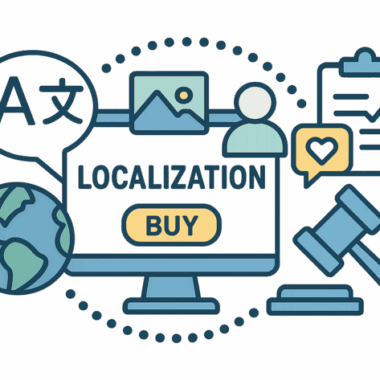

Localization Strategies for Global Affiliate Programs: Language, Culture & Compliance

Content:
- Importance of Language Localization
- Cultural Adaptation & Local Market Relevance
- Compliance With Local Regulations
- Localization of Affiliate Assets & Creatives
- Technical Localization: UX, UI & Multi-Language Tools
- Data-Driven Localization & Performance Tracking
- Working With Local Partners & Influencers
- Budgeting & Scaling Localization Efforts
- Conclusion
- Frequently Asked Questions (FAQ)
Global affiliate programs operate in highly competitive markets where user expectations differ across regions. Brands that scale internationally must account for linguistic diversity, cultural norms, and jurisdiction-specific rules that influence how audiences interpret marketing content. Without a structured localization approach, affiliate traffic often delivers low engagement, reduced conversion rates, and compliance risks. To build sustainable international reach, affiliate managers must integrate localization into every operational layer—from copywriting to analytics frameworks.
Effective localization extends beyond translating promotional materials. It transforms affiliate assets into market-specific communication tools that reflect regional behavior, technical standards, and legal requirements. This systematic adaptation increases trust, supports long-term partnerships with regional publishers, and ensures that program messaging remains consistent while meeting local expectations.
Importance of Language Localization
Language localization defines how affiliate programs communicate with audiences who expect native-level accuracy and industry-appropriate terminology. Direct translation is rarely sufficient because users evaluate brands based on linguistic authenticity, clarity, and tone. High-performing programs rely on native copywriters, linguists, and sector specialists to ensure that core messages feel organically embedded in each market’s communication style.
A multilingual strategy also strengthens global affiliate marketing visibility in search engines. Each region uses unique keyword patterns, colloquialisms, and semantic structures. Localizing these elements increases organic traffic and improves the authority of brand-related content. Working with local SEO specialists ensures that international SEO aligns with regional search behavior and avoids keyword cannibalization.
Key Components of Effective Language Localization
- Native rewriting, not literal translation
- Local keyword research
- Region-specific terminology for technical niches
Tone adaptation for formal or informal markets
Cultural Adaptation & Local Market Relevance
Cultural adaptation ensures that affiliate content aligns with the expectations and behaviors of local audiences. Even perfectly translated materials may fail if visual elements, communication norms, or value propositions feel foreign. Cultural sensitivity influences trust, which is a core driver of affiliate conversions in emerging and mature markets alike. Affiliates who integrate cultural nuances into storytelling achieve significantly higher engagement rates.
Local market relevance also depends on understanding consumer behavior patterns such as payment preferences, risk tolerance, and product adoption cycles. For example, audiences in APAC markets respond better to mobile-first creatives, while in Western markets, longer analytical content formats often perform better. By integrating cultural insights early, programs avoid mismatched user experiences and strengthen brand positioning.
Cultural Elements to Analyze
- Visual symbolism and acceptable imagery
- Communication style (direct vs. contextual)
- Social norms and risk perception
- Price sensitivity and local value metrics
Compliance With Local Regulations
Legal compliance is a critical pillar of global partner programs because regulatory requirements differ widely between jurisdictions. Markets such as the EU enforce strict privacy standards, including GDPR, which governs how affiliate links collect and process user data. Regions like the US require clear advertising disclosures under FTC guidelines, while APAC countries often regulate payment flows, financial claims, and content categories.
Failure to comply can lead to penalties, campaign bans, or the suspension of affiliate accounts. To mitigate risks, programs must standardize compliance workflows and conduct ongoing legal reviews. This includes documenting how affiliates disclose partnerships, training publishers on regional rules, and developing multi-market compliance checklists. A proactive compliance model stabilizes international expansion and protects revenue streams.
Regulatory Areas to Monitor
- Data privacy and cookie consent
- Required financial disclaimers
- Advertising transparency
- Age-based content restrictions
- Country-specific tax regulations
Localization of Affiliate Assets & Creatives
Affiliate assets require precise adaptation to achieve consistency across global markets. Landing pages, banners, email sequences, and product descriptions must be restructured for regional clarity and persuasive impact. Visual localization involves color adjustments, typography changes, image replacements, and the removal of culturally irrelevant symbols. These elements affect CTR and conversion rates significantly.
Localizing promotional mechanics also strengthens user engagement. For example, certain markets respond well to time-limited promo codes, while others value loyalty-based incentives. Program managers must maintain variation across regions while ensuring brand alignment. A localized asset repository helps affiliates deploy the correct creatives and prevents mismatched messaging.
Example: Creative Localization Comparison
| Element | Global Version | Localized Version |
| CTA | “Start Now” | Market-aligned phrase reflecting user intent |
| Pricing | USD | Local currency and rounding conventions |
| Visuals | Generic imagery | Locally relevant models and settings |
| Email Funnel | Standard sequence | Adjusted length and tone for local user behavior |
Technical Localization: UX, UI & Multi-Language Tools
Technical localization ensures that user interfaces and technical frameworks are optimized for regional usability. UX/UI inconsistencies can significantly reduce conversion rates, especially when currency formats, reading direction, or date structures do not match local standards. Multi-language CMS systems, hreflang implementation, and mobile-first layouts ensure that affiliates direct traffic to technically compliant pages.
Infrastructure also influences performance. Regions with slower connectivity benefit from local CDNs and lightweight assets. Ensuring that forms, checkout processes, and mobile navigation follow local behavior patterns increases lead quality and minimizes bounce rates. Technical localization must be integrated into the development pipeline to maintain coherence across versions.
Technical Elements to Localize
- Currency and tax calculation
- Local hosting or CDN routing
- Standardized naming conventions
- Device-optimized navigation patterns
Data-Driven Localization & Performance Tracking
Data-driven localization aligns affiliate strategies with measurable performance indicators. Regional analytics reveal how users interact with localized content, which keywords generate conversions, and how affiliates perform across markets. By analyzing engagement metrics, managers can identify underperforming markets and adjust creative assets, messaging, or channel strategies accordingly.
A/B testing provides insights into how local audiences respond to different page layouts, CTA structures, and promotional triggers. Behavioral segmentation enables programs to evaluate traffic quality from diverse affiliate partners. Coupled with predictive analytics, this approach strengthens long-term planning and improves ROI across international affiliate marketing campaigns.
Metrics to Monitor
- Localized CTR
- Conversion rates by region
- Affiliate partner quality scores
- Device usage segmentation
- Geographic revenue distribution
Working With Local Partners & Influencers
Local affiliates and influencers provide market-specific expertise that global teams cannot replicate internally. These partners understand cultural sensitivities, consumer pain points, and communication channels that perform best in their regions. Collaboration with local publishers strengthens trust and helps brands overcome cultural resistance in markets with low brand awareness.
Selecting the right partners requires structured evaluation criteria. Programs should analyze historical performance, niche specialization, transparency, and audience relevance. Maintaining close communication and providing localized asset libraries increases partner efficiency and supports consistent messaging across campaigns.
Qualities of Effective Local Partners
- Demonstrated regional expertise
- Culturally aligned content style
- High-quality traffic sources
- Transparent reporting practices
Budgeting & Scaling Localization Efforts
Scaling localization requires structured budgeting to balance expansion speed with operational sustainability. Programs should prioritize markets based on revenue potential, regulatory openness, and affiliate ecosystem maturity. A phased rollout strategy allows teams to test localized assets in smaller segments before committing full resources.
Cost efficiency improves when automation and centralized workflows support repetitive localization tasks. Tools for translation management, asset version control, and compliance monitoring reduce operational load. By allocating budgets based on performance and anticipated ROI, brands maintain flexible expansion and optimize results across global affiliate programs.
Cost Allocation Priorities
- Linguistic adaptation
- Creative production
- Legal review
- Technical infrastructure
- Local partner onboarding
Conclusion
Localization remains a core growth driver for international affiliate programs seeking sustainable market penetration. By integrating language adaptation, cultural alignment, technical optimization, and regulatory compliance, brands achieve higher engagement and conversion rates across diverse regions. Measured strategies grounded in analytics support continuous performance improvement and strengthen relationships with local partners.
Fully localized operations enhance brand consistency, reduce compliance risks, and position affiliate programs for long-term scalability. Organizations that invest in structured localization frameworks gain competitive advantages in emerging and established markets, ensuring that affiliates deliver meaningful and predictable results globally.
FAQ
1. What is localization in affiliate marketing?
Localization involves adapting affiliate program content, creatives, and technical elements to match the language, regulations, and cultural expectations of specific markets. It ensures relevance and compliance across regions.
2. Why is localization essential for global affiliate programs?
Localized content improves user trust, strengthens conversion rates, and aligns campaigns with regional regulations. It also increases organic visibility through tailored international SEO practices.
3. How do affiliate programs ensure regulatory compliance?
Compliance requires monitoring privacy rules, advertising guidelines, financial disclaimers, and age restrictions. Programs must provide affiliates with clear instructions and regularly review regional updates.
4. What tools support localization processes?
Translation management systems, multilingual CMS platforms, automated compliance checkers, and regional analytics tools help streamline localization workflows.
5. How should companies budget for localization?
Budgets must cover language services, cultural research, asset production, legal review, and partner onboarding. A phased, data-driven approach ensures efficient resource allocation.

Gamification of Affiliate Programs: How to Motivate Affiliates with Game-Mechanics
Gamification has become one of the most effective ways to strengthen affiliate engagement and improve the overall performance of partner networks. By introducing structured game mechanics into traditional affiliate workflows, brands create measurable incentives that encourage consistent participation and higher productivity.





